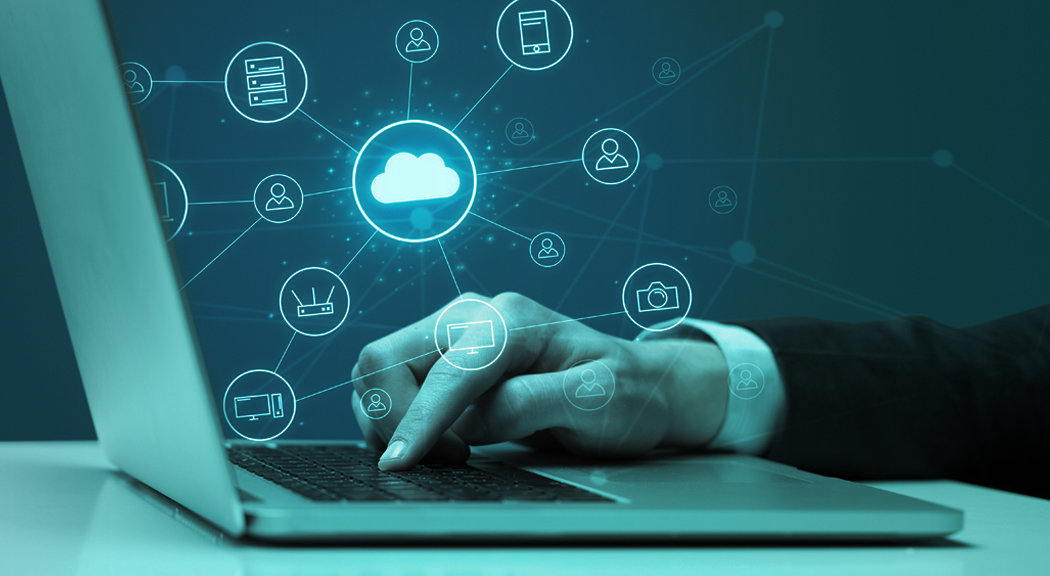I am aware of what I need to do if my phone gets hacked.
Cloud Security and Its Challenges

If you are one of the hundreds of thousands of business owners and employees who had to work remotely because of the Covid-19 pandemic, then you have definitely been forced to handle your business and share and store lots of important business papers and files online, using cloud services made available by many sites. Evidently, the “cloud” services are named as such because they are available all the time through servers connected to the Internet. You can use them to store your files, by having an account created with any such service provider.
There are three types of clouds:
1. Public Cloud
The public cloud services are available to the public, often for a fee, and it’s the service provider’s responsibility to handle the storage and files’ sharing and to allow for an on-demand scalability on the cloud.
2. Private Cloud
The private cloud is used exclusively by one organization, on-premises or in the cloud service provider’s datacenter. The private cloud is greater in value than the public cloud and is usually not shared with a third party. Aso, the private cloud offers a higher level of security and control and the storage space can be expanded by having more servers to enhance performance and capacity.
3. Hybrid Cloud
As the name indicates, a hybrid cloud is a combination of a private cloud and one public cloud where important and vital files can be stored and shared on private servers to ensure further security and control, and secondary applications are stored in the public cloud.
Tips to use cloud services safely
Carefully Choose the Cloud Server Type:
With the increasing online activities, there has been a growing competition in providing cloud services. So, you have to choose wisely the platform that best suits your type of business. It is also important that the service be provided by reliable companies that feature high security and encryption methods since it is one of the easiest ways to protect your privacy, as it provides an extra layer of security, because, decryption will be required before being allowed to access the data.
One important step to take before signing up is to carefully and fully read the user agreement as well as the terms and conditions that you have to meet in order to subscribe.
Your Privacy Settings:
Most violations occur when users wrongly set up the privacy settings and this is a very important step. You need to select clear rules from the settings menu, about who can access the data and to what extent they can use it. Moreover, if the cloud provider employs encryption, enable the end-to-end encryption in the settings menu. You can also divide the shared files in order of importance for you or for your organization. Such flexibility helps you select the highest level of privacy and protection.
Use safe passwords:
Passwords are the first line of defense against hackers; therefore, you should make them strong and unique as much as possible, and you should change them regularly and do not use the same password for all your other accounts.
You can also select the “multi-factor authentication” feature for a safe sign-in process. This means that no one can access your account from another device, even if the sign-in details were in any way available to them.
Harvard Institute of Information Security recommends using a password manager app to create complex and unique passwords for all your accounts, where all you only need to remember is the password that allows you to log into the app account, and then it helps you to access your other accounts. Apple has already recommended that its users change their passwords, by using a mix of different types of characters including numbers, capital letters, small letters, marks, and spaces, and to not use passwords that have been already used before.
Don’t share personal and sensitive information:
Make sure not to post any personal information online and, more importantly, never share personal documents, like ID, passport, etc. And if there is an urgent need to do so, share them with a reliable, highly secure party.
Use an effective antivirus:
Caution alone is not enough. The next technical step for you to take is to install an antivirus to check for any potential security threats to your device, to conduct a periodic checkup to look for any malware that might have infected the device and to remove it, and to regularly update the antivirus so that it can immediately detect new threats.
Wi-Fi Traps:
If you are connected to a public Wi-Fi when you’re on the cloud, you have a higher risk of getting hacked. So, avoid using public networks, particularly the unsafe ones that do not require passwords. Instead, set your smartphone as a secure hotspot or subscribe to an internet service through your own Wi-Fi.
What to do when you suspect that your account has been hacked?
First of all, call your account provider immediately, as each provider has its own retrieval policies, procedures and steps and you’ll be often asked to provide more information. Next, try to change the password of the hacked account or any other accounts having the same password. Once you get your account back, make sure to check your files, as the hacker might have caused damages to them. In case of serious damages, report them to the appropriate law enforcement authorities.
@2x.png)

















